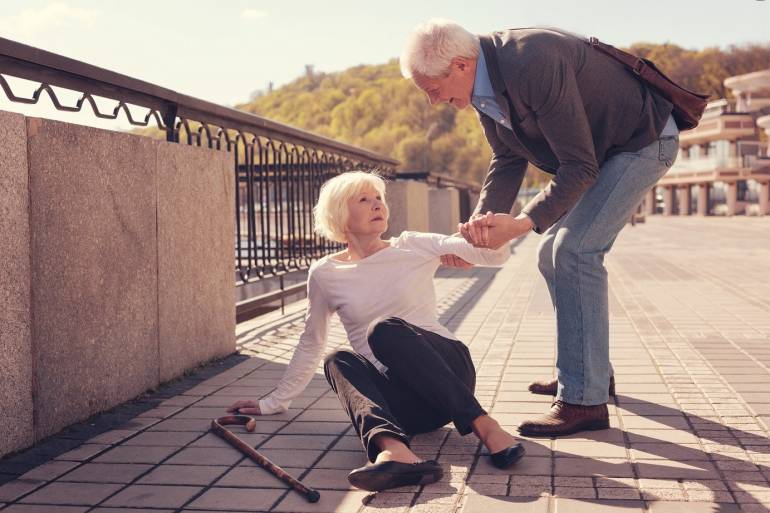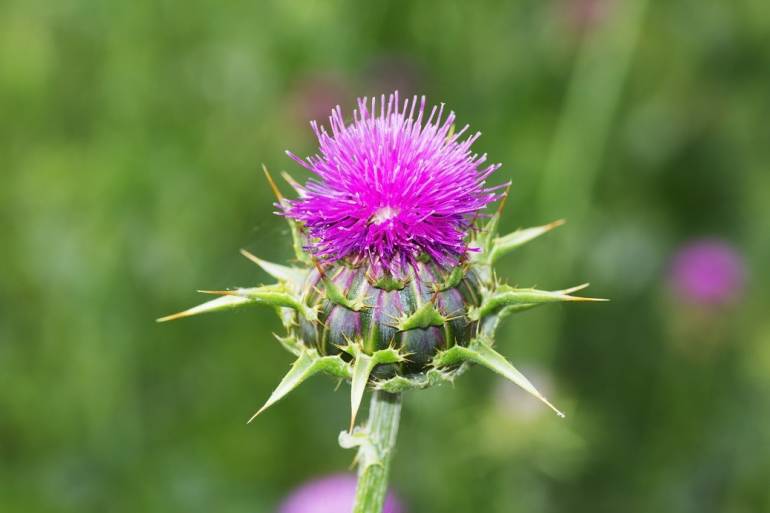Bruises happen to everyone, but most often they are petechiae after injuries or minor contusions. In women and older people, the vessels are more fragile and tend to be more damaged. Hematomas under the skin also appear after falls, venipuncture, injections or blood draws. How to speed up their healing? We suggest.
Bruises (bruises, subcutaneous hematomas) are small hemorrhages of blood from damaged subcutaneous blood vessels. Everyone is familiar with them since childhood. They usually arise from minor injuries and during sports activities. They also have some non-obvious causes, such as falls, puncture sites or minor procedures. In some people, increased fragility of vessels and a greater predisposition to the appearance of bruises (even with minor injuries) is due to a genetic predisposition.
Bruises after falls – how to deal with them?
Tissue damage after a fall results in a painful bruise. The bruise usually takes about 1-2 weeks to heal. During this time it does not require treatment, but it can effectively impede normal daily functioning. Wanting to reduce pain and speed up tissue regeneration, it is worth reaching for home remedies for bruises and contusions.
- Cooling the painful area. Apply a cold compress (from ice wrapped in a handkerchief, a thermophore or a chilled compress) to the bruised area. Just remember that the cooling agent should not come into direct contact with the skin. The cold will reduce inflammation, constrict blood vessels and reduce further subcutaneous petechiae.
- Massaging the painful area. Using circular motions, gently massage the bruised area, preferably using a gel or ointment for bruises. This stimulates regeneration processes and aids the absorption of active ingredients from the preparations. Massage is best performed several times a day, but after the initial pain and swelling have subsided.
- Lift the limb upward. If the injury is to an arm or leg, immediately lift the limb high, above the heart line. Blood will begin to drain from the bruised area, which can reduce extensive extravasation.
- Vitamin C and rutin. For a few days, follow a diet rich in vitamin C (citrus fruits, brassica vegetables, berries), which seals the blood vessels, which will help their regeneration process. It is also worth using preparations containing rituxan, which has a beneficial effect on the condition of the vessels.
- Ointments and gels from the pharmacy. To speed up the healing of bruises and contusions, it is worth reaching for over-the-counter herbal medicines based on arnica montana and calendula or preparations with heparin, available at the pharmacy. Their regular use accelerates the absorption of petechiae and tissue regeneration.
Also check: over-the-counter bruise medications
Bruises after injections – how to avoid them?
Extensive bruising after abdominal injections is a problem mainly for diabetics who need to take insulin regularly. While they are difficult to avoid, there are several ways to reduce the likelihood of their occurrence. So how do you avoid bruises after regular abdominal injections?
- Not in the same place. Multiple injections into the same place can cause extensive damage to tissues and blood vessels, resulting in bruising and sometimes scarring.
- Further from the navel. Tissues close to the belly button are more sensitive, so choose a location slightly away from it.
- Longer needles. Practice shows that injections with short needles are more likely to result in the appearance of bruises. It is worth checking whether such a change will avoid the appearance of tissue damage.
Both before and after the injections, it is a good idea to cool the injection site. This can be done with ice cubes wrapped in cloth, cold compresses or a chilled thermos. The cold causes the tiny blood vessels to shrink, reducing the risk of damage to them during the injection. If bruises nevertheless appear, remember home remedies for dealing with the problem and the use of ointments for bruises available at the pharmacy without a prescription.
Bruises after a blood draw – how to speed up their healing?
Drawing blood in the bend of the elbow or on the back of the hand is one of the basic diagnostic tests. Almost all of us do blood tests at least once every few years, and many people – even more often. The reason for the appearance of bruises after blood draws is most often the failure to insert the vein properly, resulting in damage to the vein. More often, subcutaneous hemorrhages occur when a person has fragile vessels. This often happens in the elderly.
The second major cause of the appearance of painful bruises is extravasation of blood due to too short or improper pressure at the injection site. When this happens, blood spills from the damaged vessels into the nearby subcutaneous tissue, which is visible in the form of an extensive bruise. It is accompanied by pain, slight numbness and a “pulling” sensation. Similar symptoms can occur after the use of venflons. Some patients additionally complain of the presence of a palpable hard lump under the surface of the skin.
Although bruises usually absorb on their own after a few days, painful lesions on the hand or in the bend of the elbow cause considerable discomfort and make it difficult to perform daily activities. To speed up their healing, it is worth reaching for home remedies for bruises or lubricating the lesions with herbal ointments based on arnica and calendula.
Although bruises and contusions are a fairly common problem that do not pose a health risk, they can effectively impede normal functioning. Home remedies can speed up their healing. And it is worth using them to facilitate tissue regeneration. However, if bruises appear for no apparent reason, accompanied by severe pain and swelling, it is worth going to a specialist. They may be symptoms of a serious disease.







